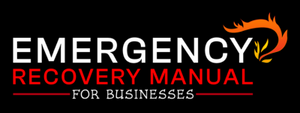· By Zoritha Thompson
How to Identify Your Target Market and Reach the Right Customers

Reaching the right customers is essential for any business. Instead of marketing to everyone, focusing on your target market ensures that your efforts attract people who are most likely to buy your products or services.
Here’s how to identify your target market and reach the right customers effectively.
1. Analyze Your Current Customers
Start by looking at your existing customer base to identify common characteristics.
-
Who are your most loyal customers?
-
What demographics do they share (age, location, income level)?
-
What problems does your product or service solve for them?
Understanding your current customers helps you attract similar high-value clients.
2. Define Your Ideal Customer Profile (ICP)
An Ideal Customer Profile (ICP) outlines the characteristics of your perfect customer. Consider:
-
Demographics: Age, gender, income, education, occupation.
-
Psychographics: Interests, values, lifestyle, buying behavior.
-
Pain Points: Challenges they face and how your business can solve them.
The clearer your ICP, the easier it is to tailor your marketing efforts.
3. Research Your Market and Competitors
Analyze your industry and competitors to see who they target and how they market to them.
-
Study customer reviews and testimonials from competitors.
-
Look at social media engagement to see which audiences respond to their content.
-
Identify gaps where your business can offer something unique.
4. Use Data and Analytics Tools
Leverage analytics to understand your audience better.
-
Google Analytics – See who visits your website and what content they engage with.
-
Facebook Insights & Instagram Analytics – Identify audience demographics and engagement trends.
-
CRM Data – Track customer purchasing behavior to refine your marketing approach.
5. Segment Your Audience for Personalization
Not all customers are the same. Segment your audience based on:
-
Geographic factors (local vs. global customers).
-
Buying behavior (new vs. repeat customers).
-
Interests (what type of content they engage with).
Personalized marketing improves engagement and increases conversions.
6. Choose the Right Marketing Channels
Once you know your target market, focus on where they spend their time.
-
Social Media: Instagram for younger audiences, LinkedIn for professionals, Facebook for broad engagement.
-
Email Marketing: Personalized offers and content for customer retention.
-
SEO & Content Marketing: Blog posts and videos that attract organic traffic.
-
Paid Advertising: Facebook Ads, Google Ads, and influencer partnerships.
7. Test, Track, and Adjust Your Strategy
Marketing is an ongoing process. Track your results and refine your strategy as needed.
-
Run A/B tests on ads and landing pages.
-
Analyze conversion rates to see which campaigns perform best.
-
Adjust messaging and offers based on customer feedback.
Final Thoughts
Identifying your target market allows you to focus your efforts on the right customers, increasing sales and brand loyalty. By analyzing data, segmenting your audience, and choosing the right marketing channels, you can create more effective campaigns and drive real business growth.
